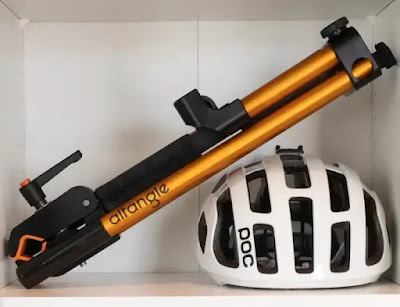Yesterday I wrote about how, in the old days (You get to say things like that in midlife!), when putting together a bicycle drivetrain, you didn’t have to worry much about compatibility. One company’s derailleurs worked with another firm’s shift levers, and it didn’t matter how many cogs were on your freewheel.
The bad news was that such compatibility didn’t extend to other parts of the bicycle. There was—and is—a dizzying array of seatpost diameters, for example. Oh, and good luck finding a replacement for that “Swiss” threaded bottom bracket. Velo Orange offers modern sealed bearing bottom brackets in it and other “obsolete” configurations, but they might not fit your crank.
Back in the old days (!) many bike shop employees and owners weren’t aware of those, and other (non)compatibility issues. And when the ‘70’s Bike Boom exploded in the States, shop mechanics and managers came across bikes and parts they’d never seen before and didn’t know what they needed in order to assemble or repair them.
A certain mechanic was working at the Missing Link Bicycle Cooperative in Berkeley, California. Henoticed the problems I’ve described and how grappling with them was keeping shops from running more efficiently—which, he thought, was keeping people from enjoying cycling.
So what did he do? He compiled data on all sorts of bike parts and wrote a book he self-published.
If you’ve worked in a bike shop during the past half-century, you’ve used it or its six subsequent editions. Even if you haven’t worked in a shop, you might have owned and used it.
If Tom Cuthbertson’s “Anybody’s Bike Book” was an my introduction to bike repair, then Howard Sutherland’s “Handbook for Bicycle Mechanics” brought my knowledge and helped to elevate my skills to a shop level. It’s often been called the bike mechanic’s “bible.”
The first edition of Cuthbertson’s book came out in 1971, at the dawn of the Bike Boom. Sutherland published the first edition of his volume two years later, as the Boom was nearing high noon, if you will. Such books were very important for American cyclists and bike shops because much generational or institutional knowledge had been lost during the previous half-century or so when few American adults cycled. Much of that knowledge survived in Europe and Japan, where people cycled for transportation and recreation. But, in those days before the Internet, it was difficult to find.
So cyclists and bike mechanics certainly owe a debt of gratitude to Howard Sutherland, who passed away last month at 75. A memorial service will be at 10 am (Pacific time) today in the Berkeley City Club.
Fun fact: He had a brother who predeceased him and a sister who survives him. Their names? Mac and Beth. You’d think their parents were Shakespeare scholars or actors.




